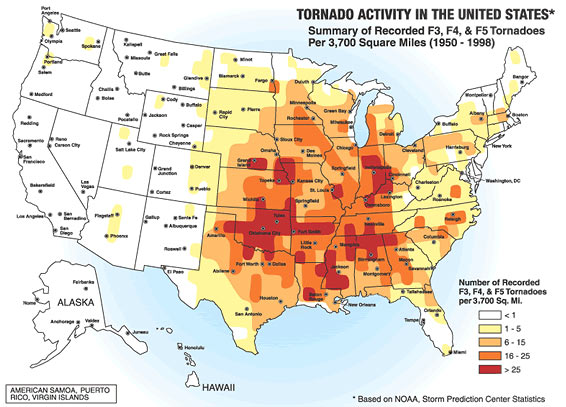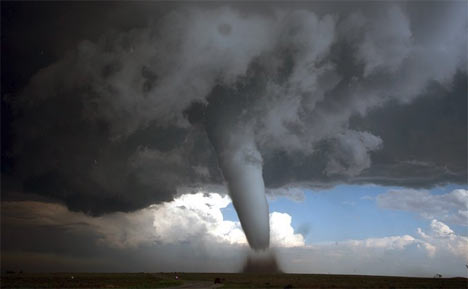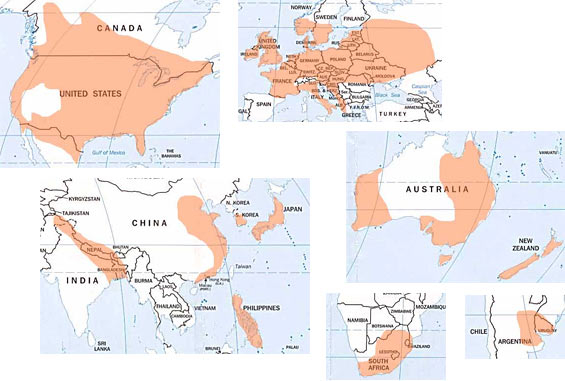Tornado Myths
There are many myths about tornadoes. Do any of these sound familiar?
MYTH: If a tornado is approaching, opening windows will equalize pressure and prevent your house from exploding.
REALITY: This tornado myth is based on the assumption that a tornado’s low pressure is the most destructive feature which causes a house or building to ‘explode’. Instead, most damage is actually caused by the tornado’s strong winds and flying debris. Opening windows won’t save your home, and it will reduce the amount of time you have to take cover. When it comes to severe weather, every second counts, so forget the windows and take shelter immediately.
MYTH: The safest place to be during a tornado is the southwest corner of a basement.
REALITY: There was a theory that if a tornado moves in a northeast direction (the ‘typical’ direction of many tornadoes), so will its wind and debris, leaving the southwest corner of a building practically untouched. While it’s true that many (not all) tornadoes move from west to east, or southwest to northeast, a tornado’s rotating winds can propel objects in any direction. Always seek shelter in an interior room on the lowest level of your home, placing as many walls as possible between you and the storm.
MYTH: If I’m caught on the road during a tornado, I should seek shelter under a highway or interstate overpass.
REALITY: Overpasses are actually some of the most dangerous places to be during a tornado. As the wind is forced to squeeze through an overpass, its speed increases. People hiding under the overpass are subjected to these even-stronger winds with very little to protect them. Being above ground level also makes you more susceptible to flying debris, increasing the risk of injury or death. Unfortunately, there is no good option if you are caught driving during a tornado. If a warning is issued for your location or along your route, seek shelter in a sturdy building until the threat passes. As a last resort, pull off the road, leave your vehicle and lie flat in a low ditch away from trees and cars.
MYTH: The sky will turn green before a tornado.
REALITY: Green-tinted clouds usually foreshadow severe weather, but not necessarily tornadoes. The green hue is produced by the scattering of light through a very tall thundercloud. These storms are generally strong and may produce plenty of lightning and hail, but no association has been found to reliably predict tornadoes. Tornadoes can and do occur without a green-tinted sky, so don’t rely on a cloud’s color to determine if you need to take shelter.
MYTH: Tornadoes do not strike in cities.
REALITY: Though tornadoes are known to strike in the plains more often than cities, they know no bounds. Tornadoes have the ability to develop anywhere. The reason that tornadoes develop more often in open land is simply because cities are small in comparison. In the U.S., the percentage of suburban space is significantly greater than that of urban space. Additionally, states in the South and Midwest, including ‘Tornado Alley’, have more favorable conditions for tornadoes and also contain fewer cities.
MYTH: Tornadoes only happen in a certain area, such as the South.
REALITY: Tornadoes can happen anywhere.
MYTH: Since there has never been a tornado disaster near you, there will never be one.
REALITY: Don’t let your ‘normalcy bias’ fool you.
Early warning is your best protection. Stay updated on current weather forecasts, watches and warnings for your area with a weather alert radio.
Where do tornadoes most often occur in the United States?

image: wunderground.com



I wanted to let you-all in on something that’s rather important and just to add to Ken’s article a little.
(1, Never never be the hero that has to video a tornado. there have been many of people killed for that last stupid vid that shows their home blowing apart from a Tornado.
(2, If you live in a tornado area, spend a few bucks and have an UNDERGROUND Bunker built. They may not be cheep BUT how much is your and your families lives worth? Even if it’s a 5’X5′ hole 8 feet deep with a good watertight lid on it. Or have one of those “tornado closets” built. Check these out groundzeroshelters.com/saferooms
(3 I know a few of the people that “chase tornadoes”, I also know 3 of them that have died doing so. REALLY a stupid thing to do.
(4 yes it is true that tornadoes have a targeting system that guild them to “trailer parks”, Not really, but if your in a trailer/mobile-home and you hear of tornadoes in the area, you better get underground or in a “real” building FAST!
(5 SECONDS COUNT, don’t be stupid and dead both, it’s a bad combination.
Yes I have seen a tornado up close and personal when I lived in Cincinnati, it took me weeks to clean my drawers. The damage is god awful. Something you really don’t want to experience.
NRP
Tornados seek out trailer parks.
I have always marveled at the dearth of storm shelters/basements in tornado alley.
I knew somebody who lived in Moscow, OH when a tornado hit that town. His house was intact, but he said the looters arrived before the first responders.
I used to live in the orange zones, spent many times in the basement. Lived in E.Pennsylvania in the forested mountains when I suddenly saw small trees and limbs flying horizontal over the tree line from my living room. No warning was given, and no watch issued. I dashed to get my dogs and went to the basement. It passed my house as an F1 but took out some of my large trees, topping them off. Strange thing is it was UNEXPECTED, so when the tornado warning was given, it was 10 minutes after it was gone and dissipated.
Lesson for that day: never count 100% on weather reports for tornado warnings. For those who live around tall trees, they have a disadvantage locating a funnel cloud. Have a barometer handy, low pressure readings usually indicates bad storms and tornado weather, and keep your eye to the sky. Sudden high winds, a drop in pressure and temperature, a squall line of dark clouds passing overhead may be your best warnings.
I live in very light tornado activity area but it doesn’t mean there won’t be any 80 mph winds from storms coming like we had in 2012. It was like a tornado but with straight line winds, kind of a freak storm. We got no warning then either from radio or local TV stations.
Tornadoes are very rare where I live but we did have what they called a micro burst touch down. When we looked out our big picture window all you could see was white, no trees, nothing else. We didn’t know what it was at the time so we weren’t afraid but it was scary. The pressure on our barometer dropped to levels that we had never seen before, then broke. So just because you don’t live in Tornado alley doesn’t mean you won’t ever have a tornado where you live.
I live in northern Alabama. I have plenty of memories sitting bored in a storm pit at night and waiting for the storms to calm down enough I could get back to working or playing. I’ve never seen one, but my husband has a few times. Kind of a scary thought considering all the trees, hills, and stuff that obscure the sky that isn’t directly overhead.
Love your maps. I’ve often wondered where tornadoes strike in other countries.